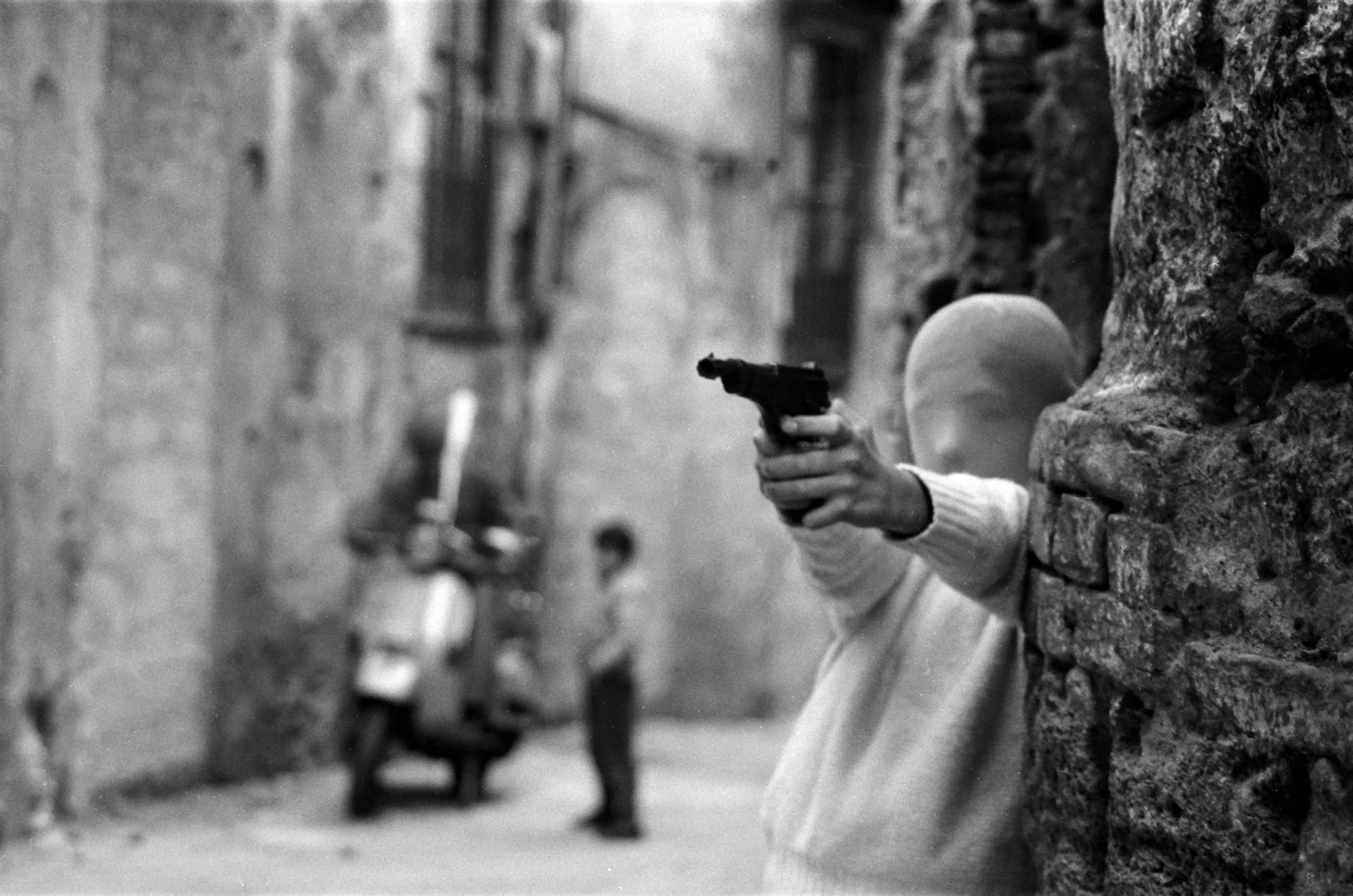Growing up in America, where, thanks to films like The Godfather or Goodfellas, the mafia seems just as cool as it does dangerous, it’s strange to watch a film like Shooting the Mafia. Directed by Kim Longinotto, the documentary follows photographer, Letizia Battaglia, a journalist for the newspaper L’Oro who spent much of her career snapping photos of the murders carried out by the Corleone, Sicily-based mafia. Angered by the poverty and violence created by the mafia, Battgalia made it her mission as both a photographer and later, politician, to document and expose their activities. However, while the film gives a decent overview of her career and the way it’s intertwined with Italy’s history of organized crime, it doesn’t dig deep enough.
Because Battaglia is the viewer’s guide through this world, much of the film is devoted to recounting the events of her personal life. So, particularly in the beginning, as Battaglia comes of age mid-century in an impoverished Palermo, the film can feel reminiscent of Elena Ferrante’s Neopolitan novels. “It was a man’s world,” she says of the Palermo of her childhood, “women were subject to their rules.” For her, as well as for many young women of the period, that patriarchy manifests literally in her father iron rule over her life.
After a man exposed to himself to Battaglia in the street, her father barely allowed her to leave the house—even forbidding her to go near the windows lest she be seen by a man. While the statement could seem hyperbolic, Longinotto and editor Ollie Huddleston reinforce just how common that behavior would have been by playing Battaglia’s words over scenes from an Italian film from the same period in which a young woman sees the boy she loves through the window and ventures out to spend the night with him. It’s an incredibly effective technique that conveys Battaglia’s life (she married a boy she met in the street at 16) before she began documenting her own life when she started her photography career at 40.
The most extensive and powerful use of that technique, though, comes during the sequence where Battaglia describes the series of affairs she had with younger men both during the end of her marriage and after. Using whole scenes from director Alberto Lattuada’s 1951 film, Anna, Longinotto allows us to visualize how Battaglia, “attracted men like flypaper,” through actress Silvan Mangano’s titular character, using the images as emphasis while Battaglia and her former lovers/fellow photographers, Santi Caleca and Eduardo Rebulla, speak.
It’s an admittedly juicy personal history–particularly in scenes where Battaglia and her ex-lovers reunite in the present day–but just when that romantic life threatens to subsume the exploration of Battaglia’s career, both she and the film leave it behind. Rather, much of the film’s second half is spent relaying the mafia’s history in Palermo and it’s an excellent primer for the uninitiated. From the images of Corleone boss, Luciano Liggio, taken by Battaglia in court to the stunning archival footage of the simultaneous trial and conviction of 338 mafia members in the late ’80s, the film gives a coherent and impressive history of the area. Unfortunately, it also lacks a larger context.
Because the film is so focused on Battaglia’s experience of the time and the emotional effect it had on her longterm, it’s hard to understand not only what her photos mean in a larger cultural context, but how they and the events themselves eventually affected change. When Battaglia mourns the loss of Giovanni Falcone, a local magistrate who made it his personal vendetta to crack down on the mafia, we understand only that she was devastated by his assassination. Sure, we see footage of mass protests and mourning, but no other perspective of his work or the way people reacted to his death outside of Battaglia’s memories and viewers not already familiar with the history are left grasping for deeper understanding.
While Shooting the Mafia is a consistently compelling picture of Battaglia’s career and the evolution of the mafia’s power in Palermo, it’s also incomplete. Though Longinotto seems to want the photographs and news footage to speak for themselves, without a better understanding of how Battaglia’s work helped turn the tide of the public’s tolerance for the mafia’s violence or even where that struggle against them stands now, the viewer can’t help but leave the film wanting more information. In terms of Battaglia at least, perhaps that’s not so bad. We may not fully understand her passion for documenting this violent, horrible way of life by film’s end, but perhaps it’s just enough to get viewers to do their own research.


